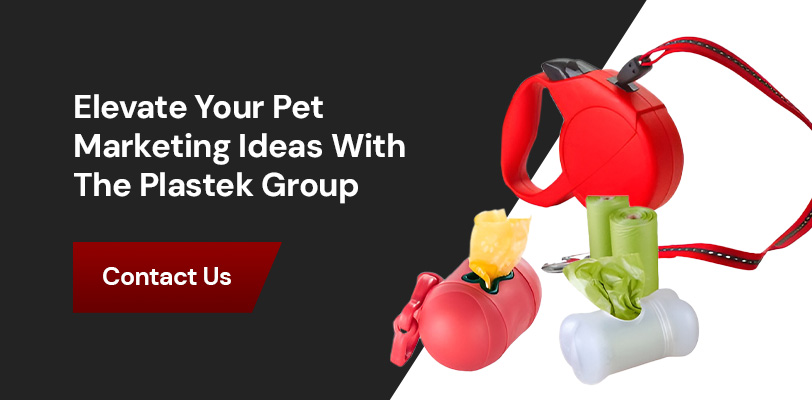The bond between humans and their pets creates a demand for high-quality, innovative pet products. From accessories to food and treats, toys, and health care items, the pet product industry offers a diverse range of items that cater to varied lifestyles and preferences.
Overall, marketing pet products is a delicate blend of understanding both pets and their owners’ needs. Ample insight into their behaviors, emotional triggers, and spending habits can help you craft the perfect pet brand marketing.
Factors to Consider When Building Your Marketing Approach
Globally, the value of the pet care market is $150.67 billion, and it will grow by about 5% annually. The right marketing tactics will help you tap into that market effectively. However, to determine which tactics will best speak to potential buyers, you first need to understand pet owners. Take the following factors into consideration:
- Target Audience: Understanding pet owners’ behaviors, demographics, and preferences will help you narrow down your target audience. Factors like their age, geographic location, income level, lifestyle, and pet type will give you ample insight for a strengths, weaknesses, opportunities, and threats (SWOT) analysis.
- Personalization and Segmentation: Once you have your target audience, segment them according to pet size, breed, age, and specific needs, like senior pets or pets with sensitive stomachs. This approach will let you tailor your marketing messages and product offerings for each segment or unique sub-customer needs.
- Benefits and Solutions: Highlight the benefits and solutions your products offer to pets. These can include health benefits, convenience, a better bonding experience, or safety features.
- Packaging: There are many types of pet care packaging to consider for your pet products. Options like jars, canisters, bottles, and pails can protect products from outside elements and keep pets from accessing treats, medication, or toys unsupervised.
Establishing Your Brand
Establish your brand’s trustworthiness by being authentic and transparent in your messaging. Openly share your brand values, product ingredients, and sourcing practices. Defining your brand’s unique selling point (USP), messaging, and target audience will set your marketing strategy on the path to success.
Part of your brand’s messaging is its packaging. Invest in eye-catching packaging and product design that stands out to consumers. Use vibrant colors, engaging imagery, and eco-friendly materials to highlight your product on store shelves.
Top Pet Product Marketing Tactics
Once you have your marketing approach in mind, how do you go about implementing it? Below are several ways you can apply your marketing data and put your approach into action.
1. Add Value With Resources
Add value to your pet brand marketing tactics by providing customers with informational content and resources. Educate your audience about health-related topics, nutrition, pet care, and training tips, positioning your brand as an authority in the industry. You can help boost these efforts by exploring partnerships with groomers, industry experts, pet influencers, or veterinarians to expand your credibility and reach. Collaborate with these stakeholders through co-branded campaigns, events, or product endorsements.

2. Invest in Digital Marketing
Engage with pet owners on a personal level by using digital marketing channels like email marketing or social media. You can share user-generated content, testimonials, and relatable stories to showcase real-life experiences of pets using your products. Use this opportunity to foster a sense of community around your brand, encouraging customers to share their feedback online.
3. Consider Retail Strategies
By implementing pet store marketing ideas, you can attract more customers, driving both in-store and online sales. Some effective strategies include:
- Merchandising Displays: Packaging and displays can attract ample attention and even encourage impulse buys from new customers. Maximize product sales and visibility by placing popular items at eye level.
- Product Sampling: Offer samples of your products in-store, allowing customers to try them before they buy. You can also opt for in-store demos to draw attention to your offering.
- Cross-Promotions or Bundling: Place related pet care products like treats with food or a grooming kit with shampoo together and offer them as part of a bundled package. This approach will increase the perceived value of your items, encouraging customers to buy complementary products.
- Customer Loyalty Programs: Set up a customer loyalty program to reward and encourage repeat purchases. You can offer personalized discounts, exclusive perks, and reward points to enhance customer engagement and loyalty.
- Online Integration: Merge your online and retail strategies to reach pet owners on a variety of levels. Consider offering in-store pickup for online sales, adding convenience for customers.
- Pet-Friendly Environment: A pet-friendly store environment with amenities like water bowls, designated pet play areas, and pet-friendly seating areas will appeal to most pet owners. If you own a pet store, host pet-friendly events to attract foot traffic and generate positive word-of-mouth.
Compliance and Regulations
Staying informed about compliance and regulations while creating and marketing your pet products will ensure the integrity, legality, and safety of these items. Doing so also helps to build trust with regulatory authorities and consumers. Some key areas to consider include:
- Product Safety Standards: Pet products must meet all relevant safety standards set by the Food and Drug Administration, including standards for ingredients, product testing to minimize pet health risks, and manufacturing processes.
- Packaging Safety: Ensure packaging materials are safe for pets, complying with regulations that mitigate risks of toxic substances, choking hazards, and sharp edges.
- Labeling Requirements: Labels must be accurate, clear, and easy to understand. Include ingredient lists, nutritional information for food products, safety warnings, and usage instructions.
- Advertising Claims: Keep all marketing materials truthful, substantiated by scientific evidence, and compliant with regulations set by agencies like the Federal Trade Commission.
- Environmental Regulations: Consider environmental regulations and guidelines during packaging design. Opt for sustainable materials to minimize environmental impact and better appeal to environmentally conscious consumers.
- Recall Procedures: Have procedures in place for handling potential product recalls. It’s important to promptly communicate with retailers, consumers, and regulatory authorities to bypass potential risks and protect public and pet health.
Elevating Your Pet Marketing Ideas With The Plastek Group
When you’re fine-tuning how to market pet products, it is essential to highlight how your products meet the desires and needs of pets — pet owners want the absolute best for their animals. Positioning your brand with that in mind allows you to successfully communicate the linchpin of your marketing strategy — your brand’s USP.
The Plastek Group is a global plastic packaging supplier with facilities in the US, Mexico, Brazil and UK that can meet your packaging needs. With over 65 years of experience, we serve businesses across a range of industries — including pet product manufacturing and packaging. Together, we can work to create the most impactful and visually appealing packaging, no matter the pet products you sell.
Contact us today to explore how our plastic manufacturing capabilities will benefit your pet product production.








